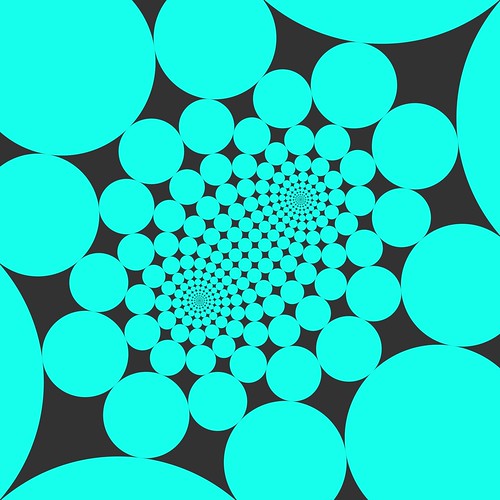Re determined at hospital admission (plasma sample 1) and within 24 h after admission (plasma sample 2). Plasma liver enzyme values of both plasma samples were substantially increased. Enzyme concentrations in sample 1 and sample 2 were: ALT 8475 U/L and 9265 U/L (reference value ,35), aspartate aminotransferase 16850 U/L and 18420 U/L (ref ,40), lactate dehydrogenase 16010 u/L andUrinary  Biomarkers of Acetaminophen HepatotoxicityUrinary Biomarkers of Acetaminophen HepatotoxicityFigure 1. APAP-induced liver injury and kidney histology in mice. Hematoxylin and eosin staining of representative liver slides from a vehicle-treated mouse (A and C) and an APAP-treated mouse (B and D). Panels A and B show a 106 magnification, and a 206 magnification of the framed area is given in panels C and D, respectively. Centrilobular necrosis can be observed in liver slides after APAP treatment. Plasma ALT levels (E) and the NHS-Biotin price percentage of centrilobular necrosis (F) increased significantly in mice receiving 275 and 350 mg/kg APAP. Periodic acid-Schiff staining of representative kidney slides from a vehicle-treated mouse (G and I) and an APAP-treated mouse (H and J) show no difference in histology. Panels G and H demonstrate a 206 magnification and a 406 magnification is given for the framed areas in panels I and J. The scalebar represents 200 mm in the slides with 106 magnification, 100 mm with 206 magnification and 50 mm with 406 magnification. ** P,0.01, *** P,0.001 compared to vehicle treated mice. ALT: alanine aminotransferase; AMAP: 3-acetamidophenol; APAP: acetaminophen. doi:10.1371/journal.pone.0049524.g17730 U/L (ref 110?95) and gamma glutamyl transpeptidase 63 U/L and 60 U/L (ref ,35), respectively. In addition, plasma and urine samples were collected from 10 patients with suspected drug-induced acute liver injury that were admitted to the emergency room at Radboud University Nijmegen Medical Centre (Nijmegen, the Netherlands) and the Hagaziekenhuis (Den Haag, the Netherlands). The demographics of these patients are shown in Table 1.HistologyHematoxylin and eosin staining was performed on liver paraffin sections. Liver damage was evaluated by a qualified pathologist and scored blinded of 10 images taken from each liver section (106 magnification). For each image the degree of centrilobular necrosis was assessed by overlaying the images with a grid (Image J, 3700`2 pixels) and counting the intersections in necrotic areas. Liver injury was reported as mean percentage of centrilobular necrosis. Kidney paraffin sections were stained using Periodic Acid Schiff staining.Urine protein profiling with MALDI-TOF MSUrine samples were normalized according to creatinine values to reduce sample protein variation [16]. Based on the method of Fiedler et al., urine samples were subsequently pretreated using affinity beads to isolate specific fractions of the urine proteome, 125-65-5 web before MALDI-TOF MS analysis [17]. We used weak cation exchange (WCX) Macro-PrepH carboxymethyl support beads (Bio-Rad Laboratories, Hercules, CA, USA) and Magnetic Beads based Hydrophobic Interaction Chromatography 8 beads (C8; Bruker Daltonics GmbH, Bremen, Germany), that bind positively charged proteins and hydrophobic proteins, respectively. Synthetic hepcidin-24 (Peptide International Inc., Louisville, KY, USA) was used as internal standard (IS) to enable comparison between samples. Of the prepared sample, 1 ml was applied to a MSP 96 polished steel MALDI target plate under nitrogen flow,.Re determined at hospital admission (plasma sample 1) and within 24 h after admission (plasma sample 2). Plasma liver enzyme values of both plasma samples were substantially increased. Enzyme concentrations in sample 1 and sample 2 were: ALT 8475 U/L and 9265 U/L (reference value ,35), aspartate aminotransferase 16850 U/L and 18420 U/L (ref ,40), lactate dehydrogenase 16010 u/L andUrinary Biomarkers of Acetaminophen HepatotoxicityUrinary Biomarkers of Acetaminophen HepatotoxicityFigure 1. APAP-induced liver injury and kidney histology in mice. Hematoxylin and eosin staining of representative liver slides from a vehicle-treated mouse (A and C) and an APAP-treated mouse (B and D). Panels A and B show a 106 magnification, and a 206 magnification of the framed area is given in panels C and D, respectively. Centrilobular necrosis can be observed in liver slides after APAP treatment. Plasma ALT levels (E) and the percentage of centrilobular necrosis (F) increased significantly in mice receiving 275 and 350 mg/kg APAP. Periodic acid-Schiff staining of representative kidney slides from a vehicle-treated mouse (G and I) and an APAP-treated mouse (H and J) show no difference in histology. Panels G and H demonstrate a 206 magnification and a 406 magnification is given for the framed areas in panels I and J. The scalebar represents 200 mm in the slides with 106 magnification, 100 mm with 206 magnification and 50 mm with 406 magnification. ** P,0.01, *** P,0.001 compared to vehicle treated mice. ALT: alanine aminotransferase; AMAP: 3-acetamidophenol; APAP: acetaminophen. doi:10.1371/journal.pone.0049524.g17730 U/L (ref 110?95) and gamma glutamyl transpeptidase 63 U/L and 60 U/L (ref ,35), respectively. In addition, plasma and urine samples were collected from 10 patients with suspected drug-induced acute liver injury that were admitted to the emergency room at Radboud University Nijmegen Medical Centre (Nijmegen, the Netherlands) and the Hagaziekenhuis (Den Haag, the Netherlands). The demographics of these patients are shown in Table 1.HistologyHematoxylin and eosin staining was performed on liver paraffin sections. Liver damage was evaluated by a qualified pathologist and scored blinded of 10 images taken from each liver section (106 magnification). For each image the degree of centrilobular necrosis was assessed by overlaying the images with a grid (Image J, 3700`2 pixels) and counting the intersections in necrotic areas. Liver injury was reported as mean percentage of centrilobular necrosis. Kidney paraffin sections were stained using Periodic Acid Schiff staining.Urine protein profiling with MALDI-TOF MSUrine samples were normalized according to creatinine values to reduce sample protein variation [16]. Based on the method of Fiedler et al., urine samples were subsequently pretreated using affinity beads to isolate specific fractions of the urine proteome, before MALDI-TOF MS analysis [17]. We used weak cation exchange (WCX) Macro-PrepH carboxymethyl support beads (Bio-Rad Laboratories, Hercules, CA, USA) and Magnetic Beads based Hydrophobic Interaction Chromatography 8 beads (C8; Bruker Daltonics GmbH, Bremen, Germany), that bind positively charged proteins and hydrophobic proteins, respectively. Synthetic hepcidin-24 (Peptide International Inc., Louisville, KY, USA) was used as internal standard (IS) to enable comparison between samples. Of the prepared sample, 1 ml
Biomarkers of Acetaminophen HepatotoxicityUrinary Biomarkers of Acetaminophen HepatotoxicityFigure 1. APAP-induced liver injury and kidney histology in mice. Hematoxylin and eosin staining of representative liver slides from a vehicle-treated mouse (A and C) and an APAP-treated mouse (B and D). Panels A and B show a 106 magnification, and a 206 magnification of the framed area is given in panels C and D, respectively. Centrilobular necrosis can be observed in liver slides after APAP treatment. Plasma ALT levels (E) and the NHS-Biotin price percentage of centrilobular necrosis (F) increased significantly in mice receiving 275 and 350 mg/kg APAP. Periodic acid-Schiff staining of representative kidney slides from a vehicle-treated mouse (G and I) and an APAP-treated mouse (H and J) show no difference in histology. Panels G and H demonstrate a 206 magnification and a 406 magnification is given for the framed areas in panels I and J. The scalebar represents 200 mm in the slides with 106 magnification, 100 mm with 206 magnification and 50 mm with 406 magnification. ** P,0.01, *** P,0.001 compared to vehicle treated mice. ALT: alanine aminotransferase; AMAP: 3-acetamidophenol; APAP: acetaminophen. doi:10.1371/journal.pone.0049524.g17730 U/L (ref 110?95) and gamma glutamyl transpeptidase 63 U/L and 60 U/L (ref ,35), respectively. In addition, plasma and urine samples were collected from 10 patients with suspected drug-induced acute liver injury that were admitted to the emergency room at Radboud University Nijmegen Medical Centre (Nijmegen, the Netherlands) and the Hagaziekenhuis (Den Haag, the Netherlands). The demographics of these patients are shown in Table 1.HistologyHematoxylin and eosin staining was performed on liver paraffin sections. Liver damage was evaluated by a qualified pathologist and scored blinded of 10 images taken from each liver section (106 magnification). For each image the degree of centrilobular necrosis was assessed by overlaying the images with a grid (Image J, 3700`2 pixels) and counting the intersections in necrotic areas. Liver injury was reported as mean percentage of centrilobular necrosis. Kidney paraffin sections were stained using Periodic Acid Schiff staining.Urine protein profiling with MALDI-TOF MSUrine samples were normalized according to creatinine values to reduce sample protein variation [16]. Based on the method of Fiedler et al., urine samples were subsequently pretreated using affinity beads to isolate specific fractions of the urine proteome, 125-65-5 web before MALDI-TOF MS analysis [17]. We used weak cation exchange (WCX) Macro-PrepH carboxymethyl support beads (Bio-Rad Laboratories, Hercules, CA, USA) and Magnetic Beads based Hydrophobic Interaction Chromatography 8 beads (C8; Bruker Daltonics GmbH, Bremen, Germany), that bind positively charged proteins and hydrophobic proteins, respectively. Synthetic hepcidin-24 (Peptide International Inc., Louisville, KY, USA) was used as internal standard (IS) to enable comparison between samples. Of the prepared sample, 1 ml was applied to a MSP 96 polished steel MALDI target plate under nitrogen flow,.Re determined at hospital admission (plasma sample 1) and within 24 h after admission (plasma sample 2). Plasma liver enzyme values of both plasma samples were substantially increased. Enzyme concentrations in sample 1 and sample 2 were: ALT 8475 U/L and 9265 U/L (reference value ,35), aspartate aminotransferase 16850 U/L and 18420 U/L (ref ,40), lactate dehydrogenase 16010 u/L andUrinary Biomarkers of Acetaminophen HepatotoxicityUrinary Biomarkers of Acetaminophen HepatotoxicityFigure 1. APAP-induced liver injury and kidney histology in mice. Hematoxylin and eosin staining of representative liver slides from a vehicle-treated mouse (A and C) and an APAP-treated mouse (B and D). Panels A and B show a 106 magnification, and a 206 magnification of the framed area is given in panels C and D, respectively. Centrilobular necrosis can be observed in liver slides after APAP treatment. Plasma ALT levels (E) and the percentage of centrilobular necrosis (F) increased significantly in mice receiving 275 and 350 mg/kg APAP. Periodic acid-Schiff staining of representative kidney slides from a vehicle-treated mouse (G and I) and an APAP-treated mouse (H and J) show no difference in histology. Panels G and H demonstrate a 206 magnification and a 406 magnification is given for the framed areas in panels I and J. The scalebar represents 200 mm in the slides with 106 magnification, 100 mm with 206 magnification and 50 mm with 406 magnification. ** P,0.01, *** P,0.001 compared to vehicle treated mice. ALT: alanine aminotransferase; AMAP: 3-acetamidophenol; APAP: acetaminophen. doi:10.1371/journal.pone.0049524.g17730 U/L (ref 110?95) and gamma glutamyl transpeptidase 63 U/L and 60 U/L (ref ,35), respectively. In addition, plasma and urine samples were collected from 10 patients with suspected drug-induced acute liver injury that were admitted to the emergency room at Radboud University Nijmegen Medical Centre (Nijmegen, the Netherlands) and the Hagaziekenhuis (Den Haag, the Netherlands). The demographics of these patients are shown in Table 1.HistologyHematoxylin and eosin staining was performed on liver paraffin sections. Liver damage was evaluated by a qualified pathologist and scored blinded of 10 images taken from each liver section (106 magnification). For each image the degree of centrilobular necrosis was assessed by overlaying the images with a grid (Image J, 3700`2 pixels) and counting the intersections in necrotic areas. Liver injury was reported as mean percentage of centrilobular necrosis. Kidney paraffin sections were stained using Periodic Acid Schiff staining.Urine protein profiling with MALDI-TOF MSUrine samples were normalized according to creatinine values to reduce sample protein variation [16]. Based on the method of Fiedler et al., urine samples were subsequently pretreated using affinity beads to isolate specific fractions of the urine proteome, before MALDI-TOF MS analysis [17]. We used weak cation exchange (WCX) Macro-PrepH carboxymethyl support beads (Bio-Rad Laboratories, Hercules, CA, USA) and Magnetic Beads based Hydrophobic Interaction Chromatography 8 beads (C8; Bruker Daltonics GmbH, Bremen, Germany), that bind positively charged proteins and hydrophobic proteins, respectively. Synthetic hepcidin-24 (Peptide International Inc., Louisville, KY, USA) was used as internal standard (IS) to enable comparison between samples. Of the prepared sample, 1 ml  was applied to a MSP 96 polished steel MALDI target plate under nitrogen flow,.
was applied to a MSP 96 polished steel MALDI target plate under nitrogen flow,.